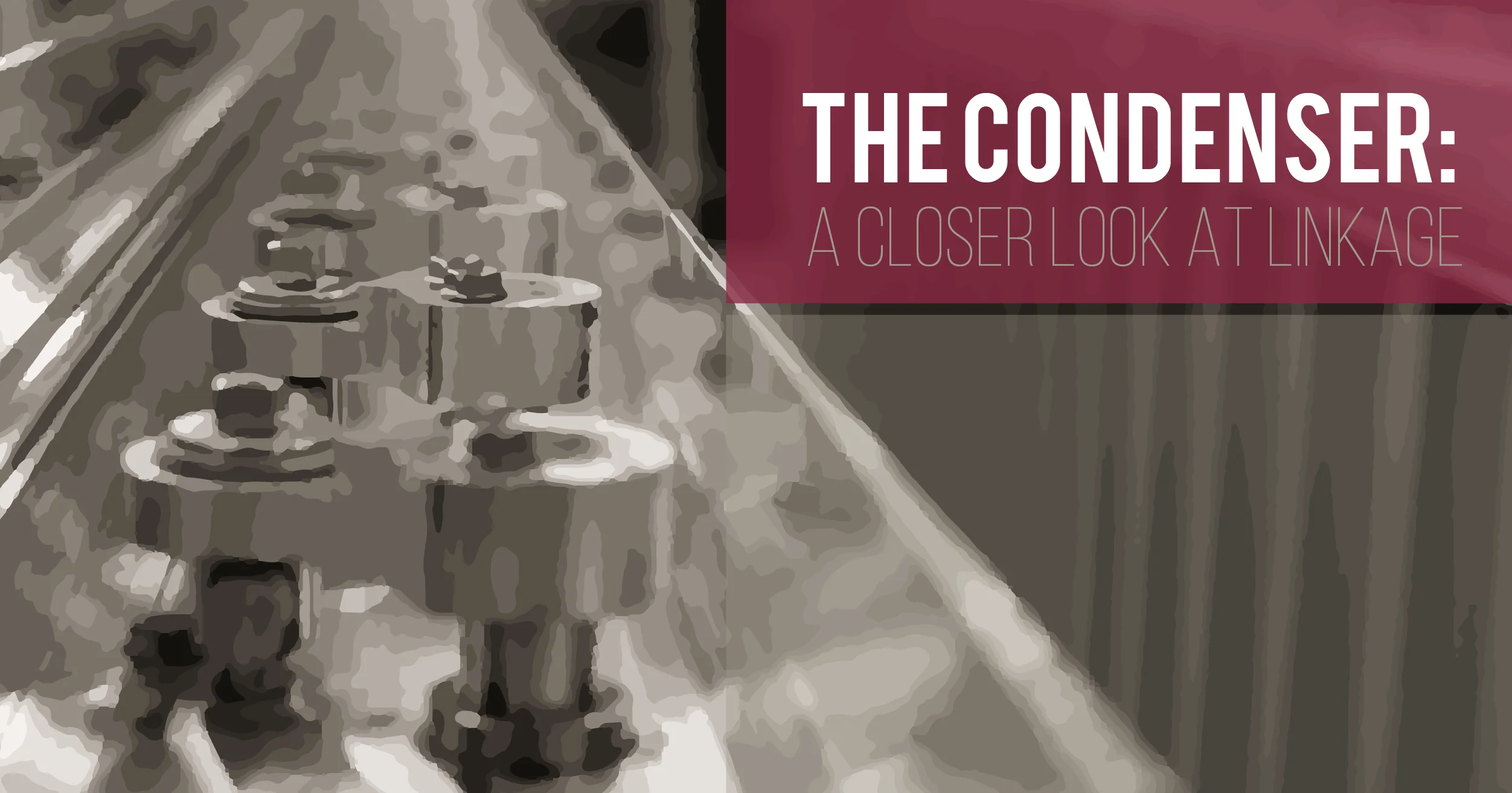How do adjustable blades move at the same time? In this Condenser, we take a closer look at linkage.
Linking Blade Action
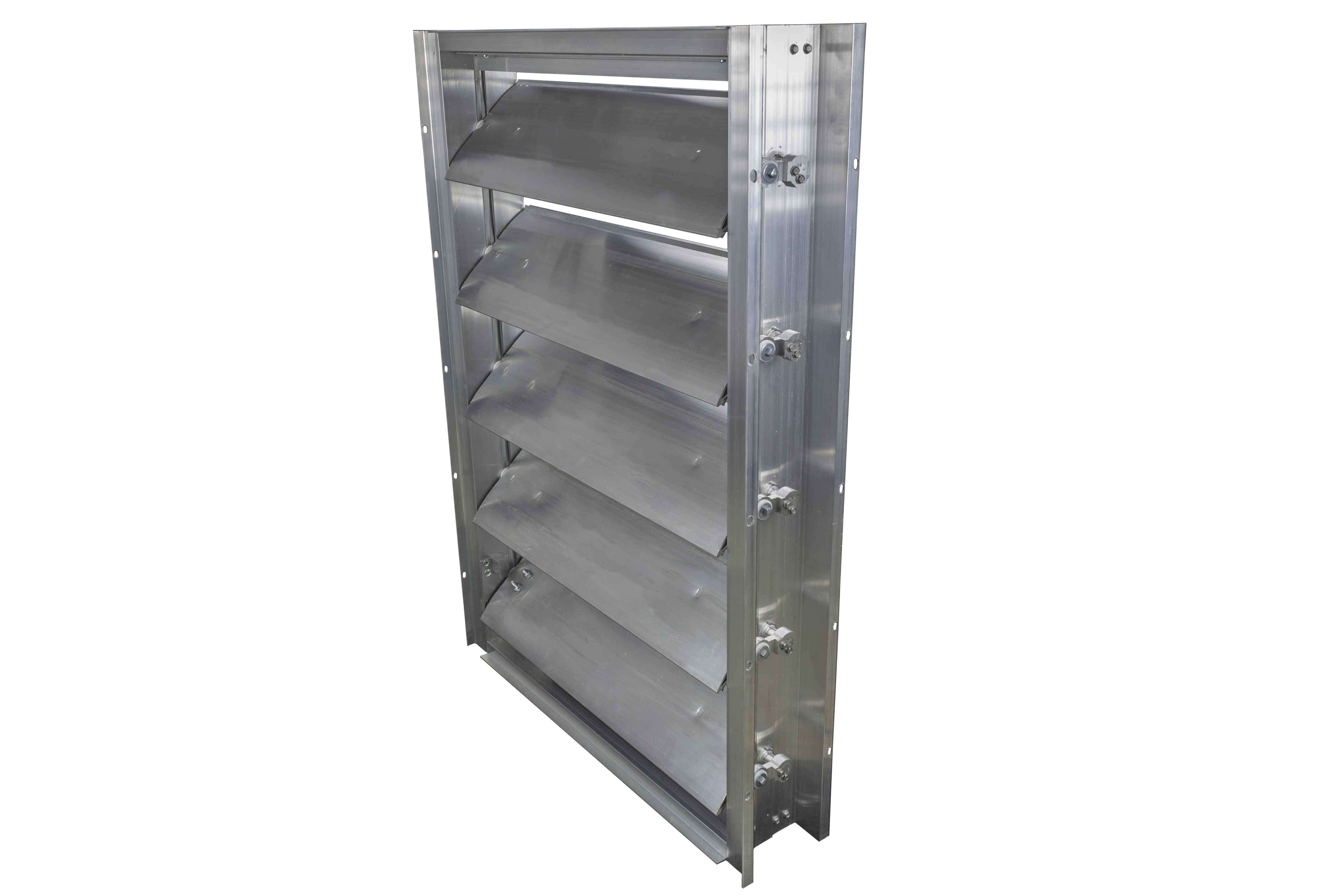
Linkage are the assemblies that connect adjustable blades together. All blades must rotate together to open and close a damper. Otherwise, you would be stuck with half-open dampers and bad airflow.
When one blade rotates, the linkage will translate that rotation to all connected blades. With linkage, you can operate all the blades with one actuator tied to a driving axle.
Linkage can be found on louvers and dampers, but it's more common on dampers. Linkage assemblies have several parts that work together.
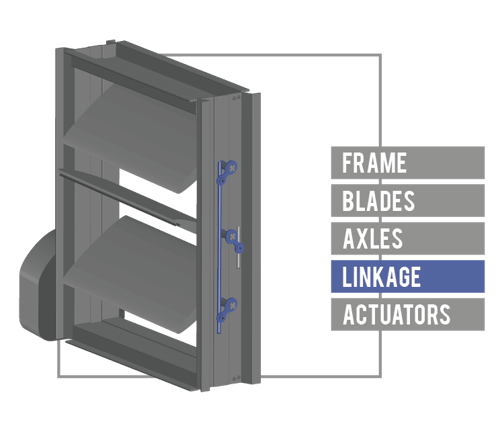 The crank arm is the primary driver of translating blade rotation. Each blade will also have a fastener and a bearing that ties the blade to the crank arm. The specific construction of the linkage will depend on its location: either concealed in the jamb of the damper or installed along the face of the damper.
The crank arm is the primary driver of translating blade rotation. Each blade will also have a fastener and a bearing that ties the blade to the crank arm. The specific construction of the linkage will depend on its location: either concealed in the jamb of the damper or installed along the face of the damper.
Parts of the Linkage
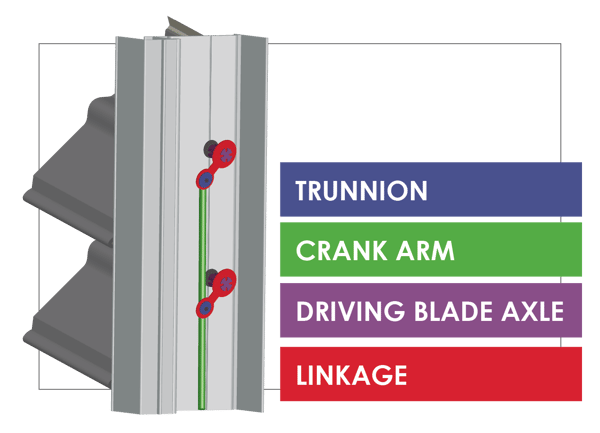
For in-jamb linkage, the crank arm will sit inside trunnions connected to each blade axle. The connect trunnion will pivot as the driving blade rotates. From here, the crank arm will translate this rotation to the trunnions connected to the other blades. In this way, all blades will rotate when the driving blade rotates.
On-face linkage consists of brackets and pivots that tie the crank arm directly to the face of each blade. The crank arm will be connected to each bracket with a pivot to help translate blade rotation. When the driving blade rotates, the connected bracket will drive the crank arm, which will move the other connected brackets.
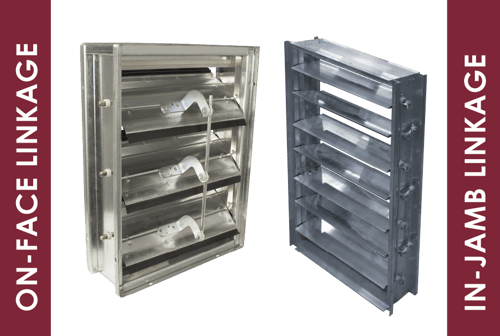
Linkage can be configured for parallel or opposed blade action, so that all blades rotate in the same direction or in opposite directions in relation to neighboring blades.
Opposed linkage will have two sets of crank arms tied to different blades. If each blade is numbered, even-numbered blades will share crank arm while odd-numbered blades will have a separate crank arm. The crank arm for the odd-numbered blades will be installed upside down.
This ensures that each set of blades rotates in separate directions. A series of smaller jumper linkages will be configured to both sets of blades to synchronize them to the same rotation action.
.png?width=600&height=314&name=MCDLG%20-%20parallel-opposed%20(Resize).png)
Why would you choose one over the other? Learn the answer in "Parallel or Opposed"
You don’t need an actuator for every blade axle. Linkage assemblies ensure that airflow dampers and adjustable louvers can open with one action.
Check out these Newsstand articles for more on control dampers:
- Actuators, Making Adjustments
- The Condenser - Open and Closed, DPI Switches
- Five Specialty Dampers for HVAC Design
Starting a new project and need HVAC dampers? Check out the 517-518 steel control damper from Arrow United Industries. Contact Arrow United and let us help with your HVAC requirements!
.webp?width=91&height=70&name=MCDLG%20Logo%20(Resize).webp)
